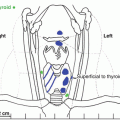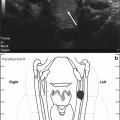© Mayo Foundation for Medical Education and Research 2016
Ann E. Kearns and Robert A. Wermers (eds.)Hyperparathyroidism10.1007/978-3-319-25880-5_1313. Medical Management of Primary Hyperparathyroidism
(1)
Division of Endocrinology, Diabetes, Metabolism, and Nutrition, Department of Internal Medicine, Mayo College of Medicine, Mayo Clinic, Rochester, MN, USA
Keywords
OsteoporosisNephrolithiasisBisphosphonateAlendronateCinacalcetPersistent primary hyperparathyroidismBone densityCase Presentation
A 53-year-old woman is seen for persistent primary hyperparathyroidism (PHPT). She has a complex past history of PHPT. She was originally found to be hypercalcemic at age 39 on routine blood tests performed prior to initiating medication for psoriasis. Testing confirmed the presence of PHPT: calcium 14.1 mg/dL (8.9–10.2 mg/dL), parathyroid hormone (PTH) 30 pg/mL (1.0–5.2 pg/mL), and 24 h urine calcium 321 mg/24 h. She had no family history of hypercalcemia or endocrine tumors. She had no personal history of kidney stones, head and neck irradiation, lithium use, or fractures. She underwent her first neck exploration with removal of a right inferior parathyroid adenoma weighing 1.56 g. Her calcium never completely normalized. She subsequently has undergone a total of five neck explorations without complete resolution of hypercalcemia. Her bone density is normal in the lumbar spine and hips and osteopenic at the one-third radius with a T-score of −1.6. She has no recurrent laryngeal nerve damage. Her current laboratories show calcium 11.9 mg/dL (8.9−10.2 mg/dL) and PTH 215 pg/mL (10−65 pg/mL). She has symptoms of fatigue and depression. Her only other medical problem is psoriasis. Parathyroid scan, neck ultrasound, and a four-dimensional computed tomography (4D CT) scan do not identify abnormal parathyroid gland.
Assessment and Diagnosis
Surgery is the treatment of choice for PHPT and is highly curative of the disorder. However, in the reoperative case for persistent (as this patient has) or recurrent PHPT, the cure rate is dramatically reduced with increasing number of operations [1]. Medical management of patients with PHPT is considered when surgery is not recommended due to comorbid medical conditions, unsuccessful or complicated prior surgery, or based on patient choice. Patients not undergoing surgery should be assessed for current complications of PHPT with appropriate imaging (e.g., bone density testing, kidney imaging for nephrolithiasis) and blood tests to assess calcium and kidney function.
A recent consensus statement on medical management of PHPT recommended that patients with PHPT be advised to consume the same amount of calcium as the general population and vitamin D intake should be adequate to maintain levels at least greater than 20 ng/mL [2]. Repletion of vitamin D deficiency in PHPT has been shown to lower bone turnover [3]. Therapy with oral bisphosphonates (alendronate and risedronate), estrogen, or raloxifene has been shown to have beneficial effects on bone density and bone turnover in PHPT [2]. No long-term trials have been performed with fracture outcomes. In one study, surgery was more beneficial to bone density than risedronate [4]. No consistent effects have been seen on serum calcium with use of oral bisphosphonates or raloxifene in PHPT. Therefore, it seems reasonable to use bisphosphonates, especially alendronate which is the best studied in PHPT, to attenuate the effects of PHPT on bone density in patients with osteoporosis or high fracture risk. The duration of bisphosphonate therapy use in PHPT has not been studied and may be determined by periodic assessment of fracture risk and bone density. A drug holiday may be appropriate as in general postmenopausal osteoporosis.
Stay updated, free articles. Join our Telegram channel

Full access? Get Clinical Tree





